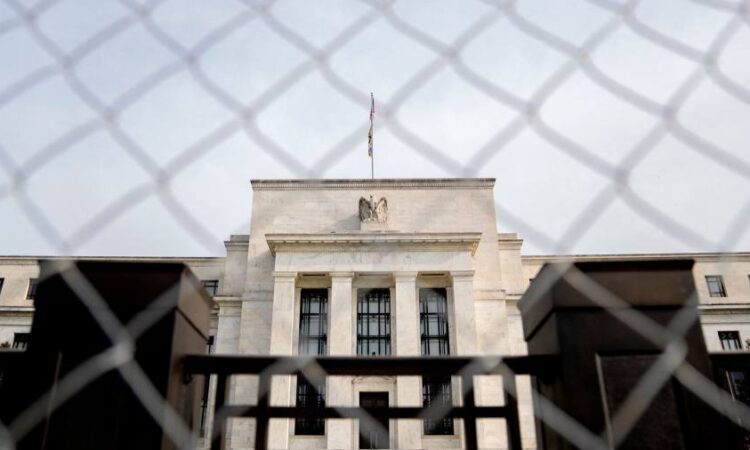
The US dollar has wilted against its peers in the opening month of 2023 as the Federal Reserve fades as the key driver in currency markets and investors focus on the policies of other major central banks.
The Fed’s campaign of big rate rises captivated investors in the first nine months of 2022, igniting a rush into the dollar. But as the US central bank has slowed its increases in borrowing costs, the currency has slid against its peers.
The dollar has fallen 1.4 per cent in January against half a dozen major currencies, leaving it on track to record its fourth-straight monthly decline. It is now trading at levels last seen in May 2022.
“The Fed is no longer in the driver’s seat — and you see that playing out across the foreign exchange space,” said Mazen Issa, senior foreign exchange strategist at TD Securities. Once the Fed had signalled it would end its pace of 0.75 percentage point increases in December, “the Fed effectively decided to cede policy leadership to its global peers”.
Central banks elsewhere have picked up the mantle, most notably the European Central Bank and the Bank of Japan. The ECB is expected to stick with extra-large rate rises while the Fed downshifts. For the BoJ, raising interest rates may still be some way off, but December’s relaxation of its policy of pinning long-term bond yields near zero has fanned speculation that the era of ultra-loose monetary policy in Japan is drawing to a close.
That more hawkish outlook has helped bolster both the yen and the euro, which have returned to their strongest levels since the spring of 2022. Monetary policy decisions next week from the Fed, ECB and Bank of England could provide further clues on whether the Fed will surrender its leadership position this year.
“2022 was the year where everything aligned for the dollar. The Fed was leading the charge with interest rates, and the war in Ukraine and zero-Covid policies in China amounted to favourable terms-of-trade shocks. All these things have unwound at the same time,” said Alan Ruskin, chief international strategist at Deutsche Bank.

High costs for raw materials like natural gas and oil made 2022 hard for economies that depend heavily on commodity imports like Europe, the UK and Japan. Their ratios of import prices to export prices — known as the “terms of trade” — were dismal, showing ever more capital leaving those markets, weakening their exchange rates. But this year’s winter has been warm and that trend didn’t progress as far as had been expected, keeping demand for natural gas in check.
“The terms-of-trade story has turned very much in favour of Europe, UK, Japan — commodity-importing countries. They now have much better prospects than they did before,” said Shahab Jalinoos, global head of foreign exchange strategy at Credit Suisse.
Lower commodity prices have also shifted expectations for growth outside the US. Deutsche Bank on Tuesday revised its forecast for European growth upwards, from expectations for a 0.5 per cent contraction to a 0.5 per cent expansion in 2023. “Gas storage is up and gas prices are down. Inflation is falling and uncertainty is declining. As such, we can remove the recession from our 2023 forecast, adjust headline inflation lower and pare back the deficit,” said Deutsche Bank economist Mark Wall.
Conditions are also improving in China, where the government has abandoned its zero-Covid policy, a move expected to bolster its economy after last year saw one of its weakest performances on record. The effects of the reopening on the currency market are likely to be mixed, however, as stronger growth may also push demand for commodities higher, driving global inflation up.
The greenback’s central place in global finance meant that when it rose last year, it placed pressure on economies around the world, particularly developing markets which often pay for imports in dollars and borrow in the currency. Its reversal this year has helped to stoke a turnround, with an MSCI basket of developing market currencies up 2.4 per cent in 2023.
“The dollar doom loop that markets were so worried about last year has turned into the dollar boom loop,” said Karl Schamotta, chief market strategist at Corpay.



